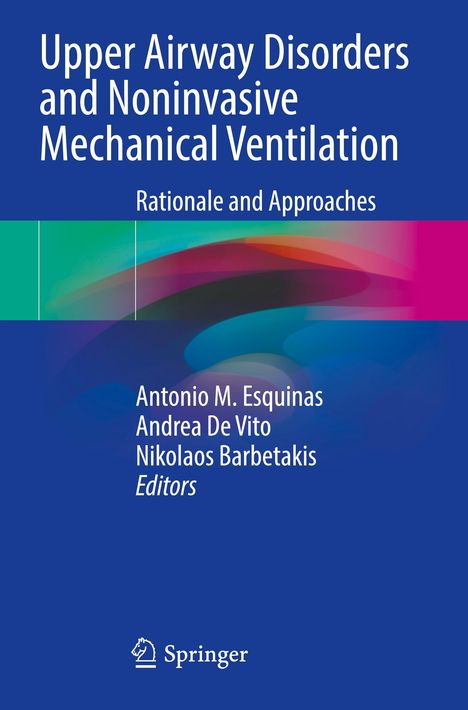Upper Airway Disorders and Noninvasive Mechanical Ventilation, Kartoniert / Broschiert
Upper Airway Disorders and Noninvasive Mechanical Ventilation
- Rationale and Approaches
(soweit verfügbar beim Lieferanten)
- Herausgeber:
- Antonio M. Esquinas, Nikolaos Barbetakis, Andrea de Vito
- Verlag:
- Springer Nature Switzerland, 08/2024
- Einband:
- Kartoniert / Broschiert, Paperback
- Sprache:
- Englisch
- ISBN-13:
- 9783031324895
- Artikelnummer:
- 11953159
- Umfang:
- 404 Seiten
- Nummer der Auflage:
- 2023
- Ausgabe:
- 2023
- Gewicht:
- 610 g
- Maße:
- 235 x 155 mm
- Stärke:
- 22 mm
- Erscheinungstermin:
- 26.8.2024
- Hinweis
-
Achtung: Artikel ist nicht in deutscher Sprache!
Weitere Ausgaben von Upper Airway Disorders and Noninvasive Mechanical Ventilation |
Preis |
|---|
Klappentext
This book analyses the basic rationale of noninvasive respiratory management in upper airways medical and perioperative disorders and key interactions and clinical implications. It offers key diagnostic tools to detect early and late failure of upper airway disorders whit a noninvasive approach. Furthermore, all medical and post-operative clinical indications of acute and chronic diseases in upper airway respiratory disorders and outcomes are summarized. The book can be considered unique from various perspectives: from the physiological and practical point of view as well as from the side of the therapeutic approach. As a matter of fact, from the physiological perspective, noninvasive mechanical ventilation has been shown to have several beneficial effects on the elasticity, musculature, and resistance of the upper and lower airways. Then, in the book the relationships between noninvasive respiratory management options and upper airway disorders in medical and postoperative conditions are also considered. Finally, the book provides information and analysis of the interaction of upper airways in the interaction of noninvasive mechanical ventilation management, which are the determining factors in the response in various clinical settings.
Considering the growing evidence of the role of upper airways disorders in influencing the outcomes of noninvasive mechanical ventilation, in this book is presented a unique multidisciplinary approach to better understand the role of upper airways in noninvasive mechanical ventilation.
The volume ¿ richly illustrated ¿ offers an exhaustive analysis of the role of the upper airways in patients who require treatment with noninvasive mechanical ventilation and can be considered a scientific reference for several specialists such as intensivists and anesthesiologists, pneumologists-sleep medicine professionals as well as otorhinolaryngologists.


